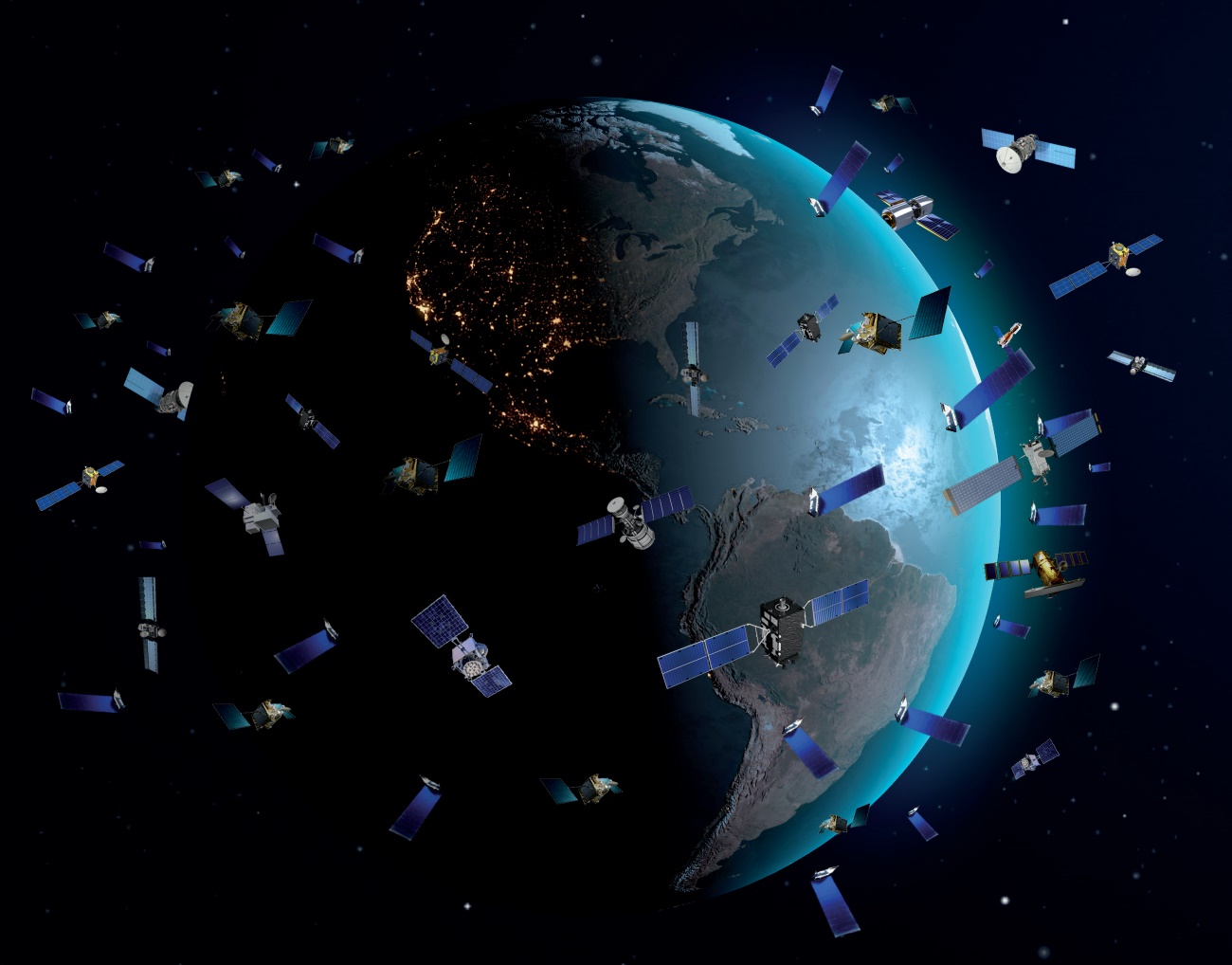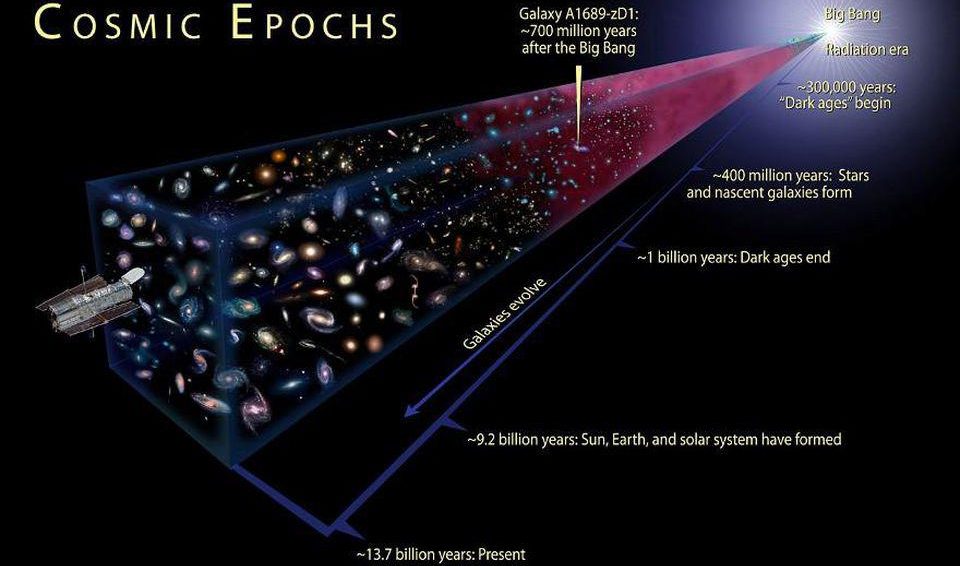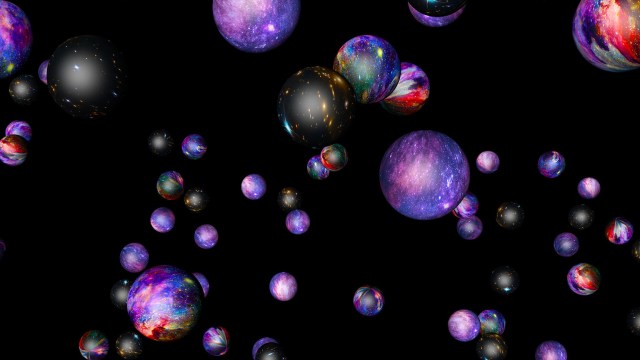Ask Ethan: Do we still need ground-based astronomy?
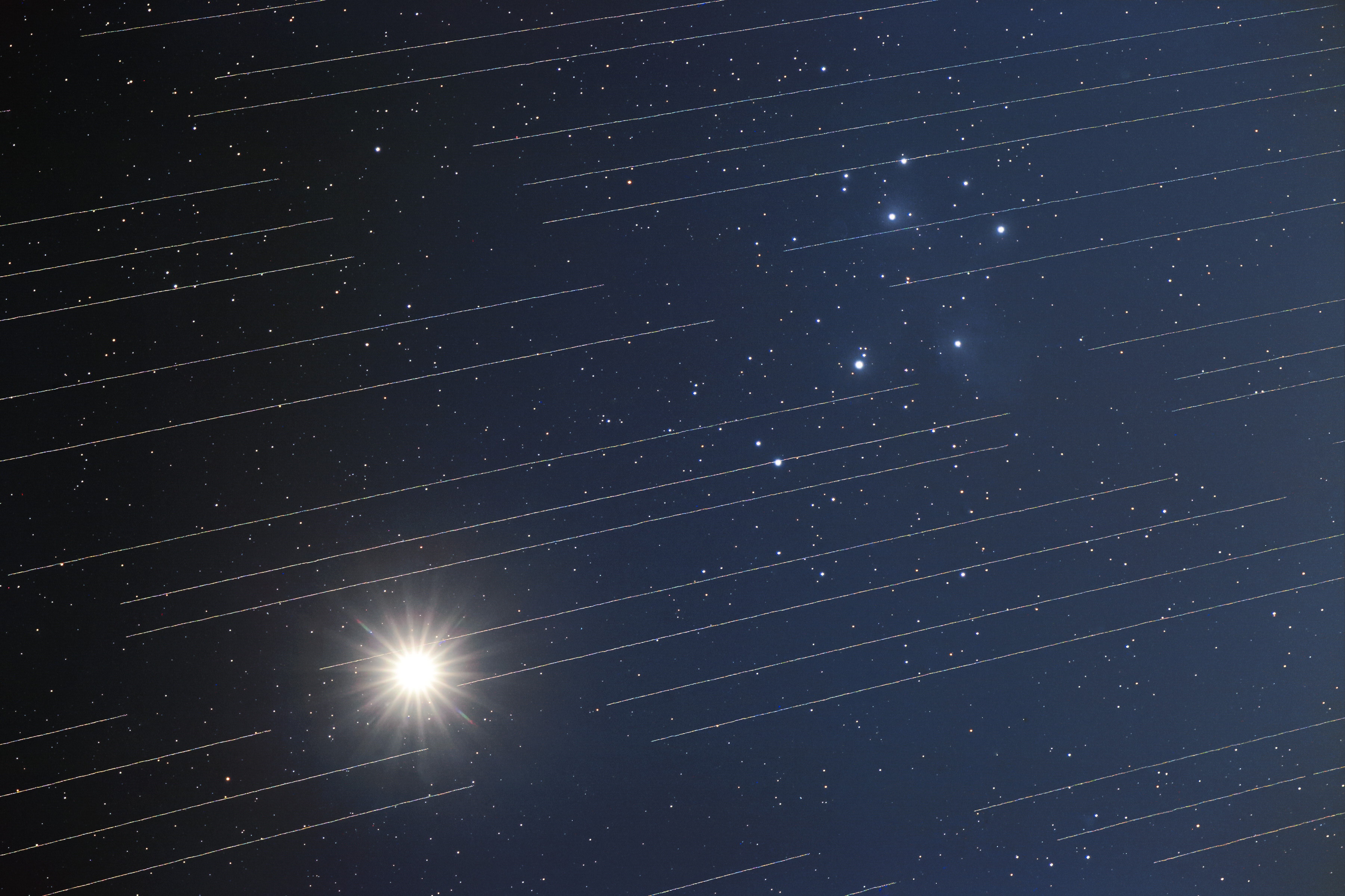
- Some of humanity’s greatest views of the Universe come to us not from ground-based telescopes, but from observatories in space, including Hubble, Spitzer, Herschel, and imminently, James Webb.
- Over the past three years, an explosion in the number of satellites has just begun, with more than 100,000 additional satellites planned to be launched over the coming decade.
- It’s tempting to attempt to transition all of astronomy, then, to space-based endeavors, abandoning ground-based astronomy in the process. Here’s what we’ll lose if we try it.
For nearly all of the natural history of planet Earth, the sight of a clear, dark night sky has been accessible to all inhabitants. Since the dawn of widespread electrification, artificial lighting has become a hindrance to astronomy, and more recently — since the dawn of the space age — satellites have confounded our terrestrial observations. Astronomy, arguably the oldest science of all that likely even predates homo sapiens, has never had more obstacles to contend with.
Given the recent flurry of new satellites since 2019, their already significant impact on astronomy, and with many more certain to come, does ground-based astronomy still have a future? Some people are asking whether it’s time to transition the entire enterprise to space, including George Hampton, who writes in to ask:
“How important is ground based astronomy for science now that we are getting instruments into space? I understand that there are far more instruments on the ground but being above the atmosphere has so many advantages that it might be that the bulk of new discovery comes from space based astronomy.”
This is a common line of thought, particularly for those who are drawn in by the allure of commercial benefits of these mega-constellations of satellites, like globally accessible high-speed internet. Let’s look at the facts together.
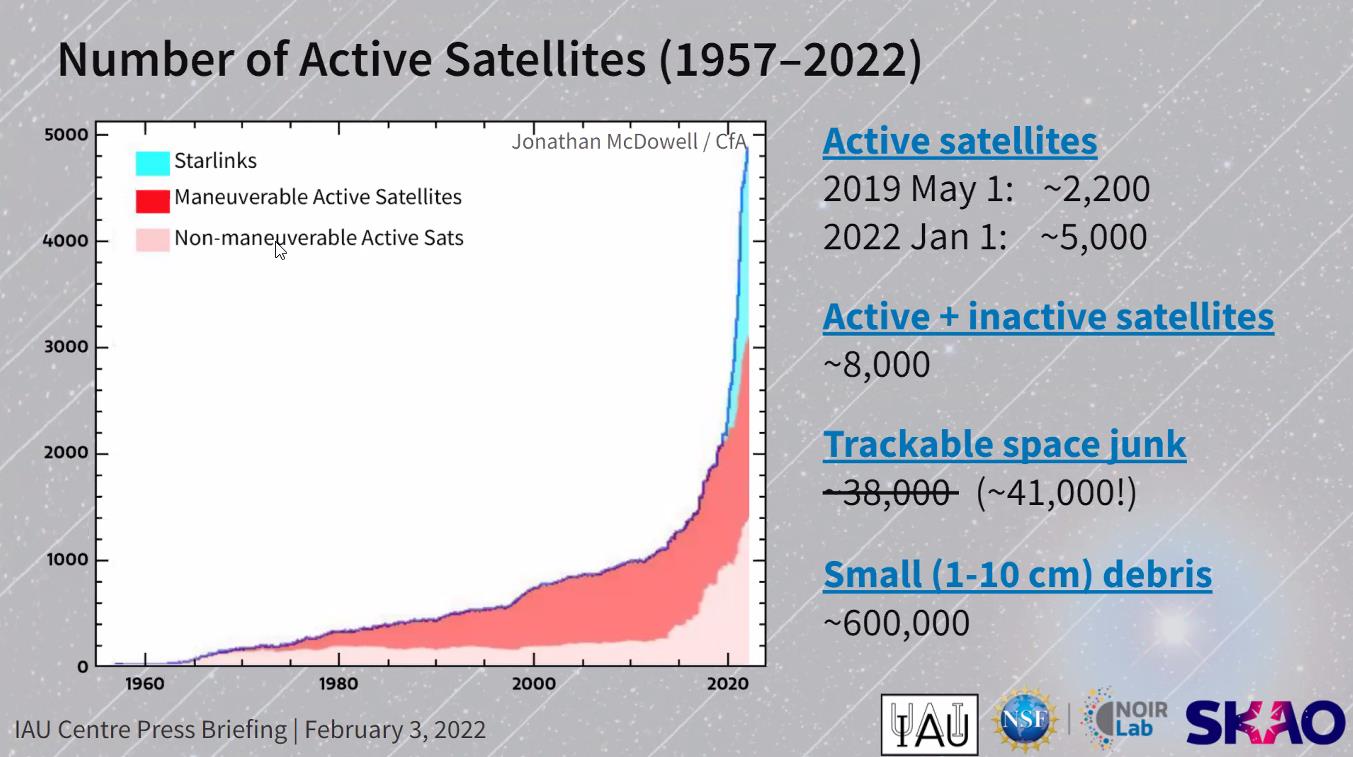
On February 3, 2022, the International Astronomical Union launched a new center: for the Protection of the Dark and Quiet Sky from Satellite Constellation Interference. From the launch of the first satellite, Sputnik, in 1957, until May of 2019, the number of active satellites in Earth’s orbit remained relatively low, never exceeding 2,200 at any one time. Just 32 months later, at the start of 2022, that number had skyrocketed to approximately 5,000, largely driven by SpaceX and their new array of Starlink satellites.
Designed to orbit in criss-crossing train-like patterns, these satellites were initially startlingly bright: as bright as perhaps the 20th brightest star in the sky upon launch, and still visible to the naked eye in their final orbits. By controlling their orientation and adding a visor to the satellites, the current generation of Starlink satellites is significantly fainter, but still brighter than the minimum acceptable recommendations put forth by astronomers during the SATCON1 and SATCON2 workshops.
Moreover, this is just the beginning of the story, as — when you combine the filings submitted to the Federal Communications Commission (FCC) and the International Telecommunication Union (ITU) — we can anticipate over 100,000 new satellites entering Earth’s orbit over the coming decade.
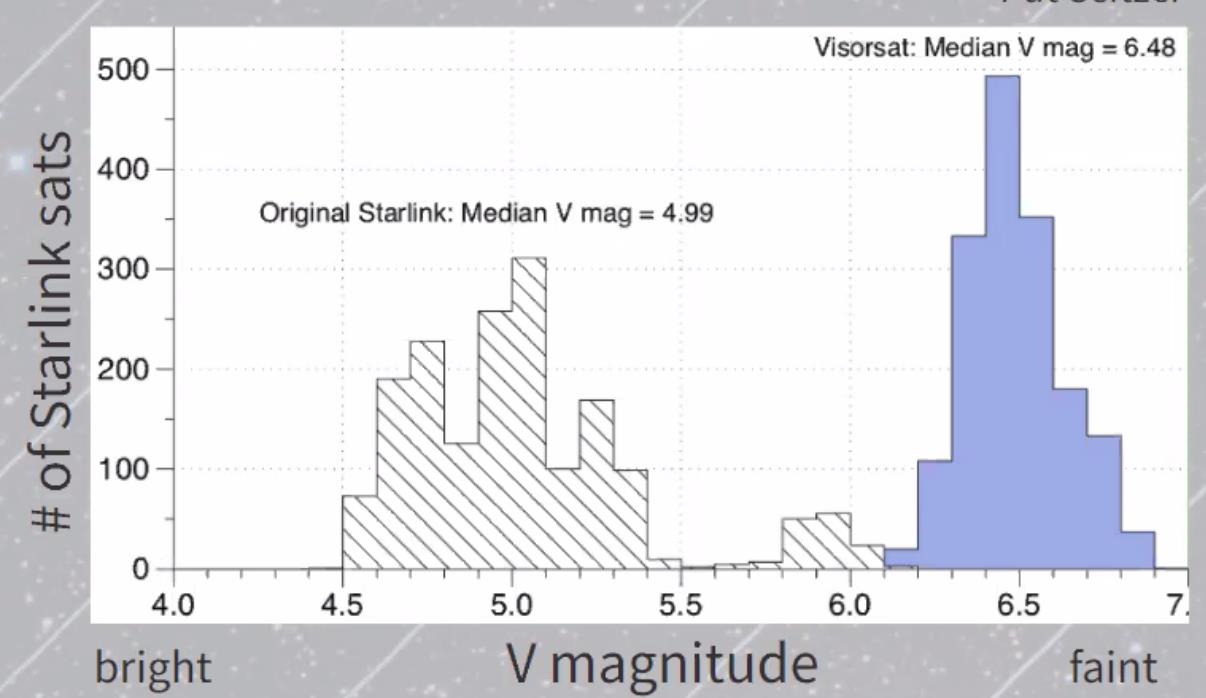
There are three major problems with these satellites when it comes to ground-based astronomy, and each one is a complicated issue without an easy solution.
- There are going to be a tremendous number of these satellites.
- Even when in their final orbits, they’re still going to be very bright.
- And they’re going to be moving very quickly, particularly since they’re in low-Earth orbit, meaning they’re going to intercept a lot of astronomical real estate, and every observation will be at risk.
In astronomy, we measure how bright an object appears on the magnitude scale, and the current satellites that are being launched today will range in magnitude from +6.5, right at the threshold of naked-eye viewing, to +9, which can be seen with the aid of large binoculars or any telescope.
This, in many ways, is already catastrophic. There are only ~9000 naturally occurring objects in Earth’s sky that are magnitude +6.5 or brighter, and only ~120,000 that are magnitude +9 or brighter. Even if every single satellite provider voluntarily agrees to, and meets the recommendations put forth by astronomers (and only three companies have joined that effort so far), there will soon be as many satellites in the sky as there are naturally occurring objects visible with binoculars and most telescopes.
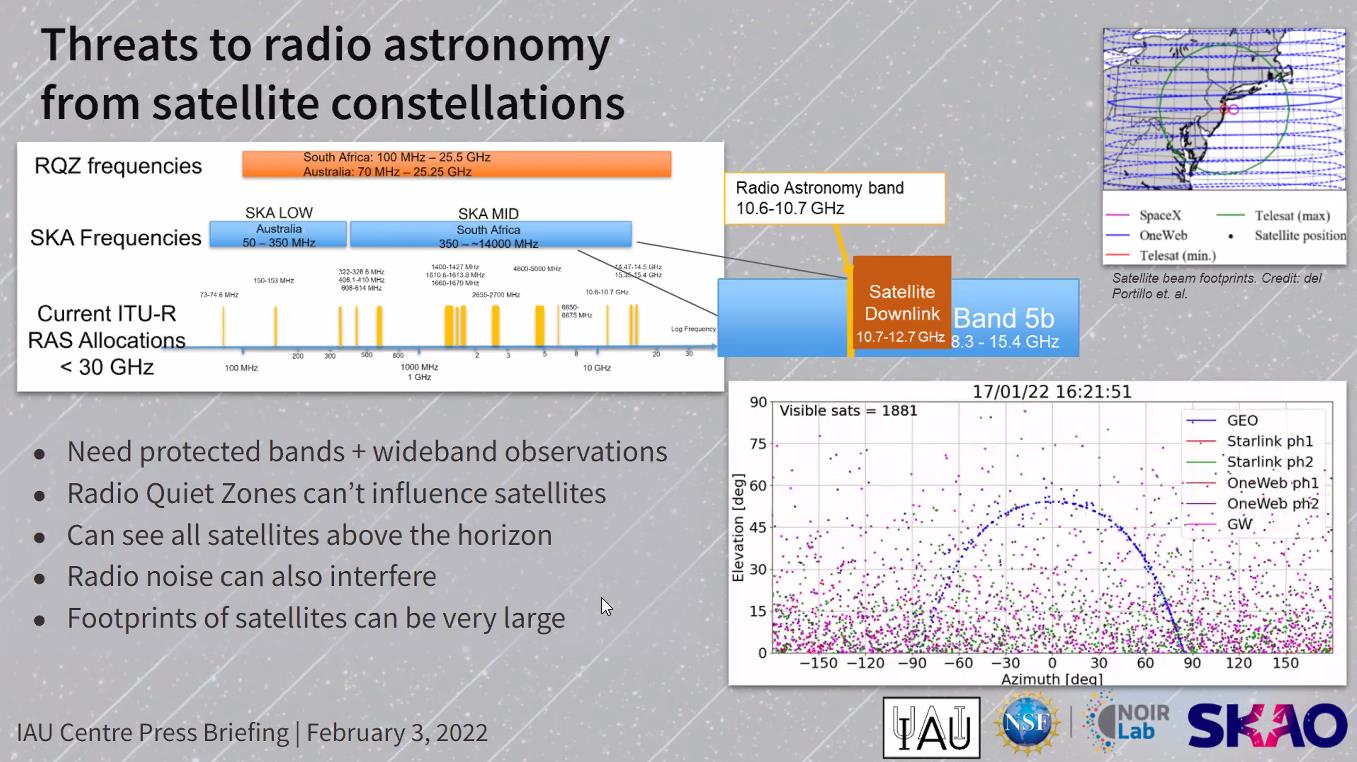
Some observatories, mind you, will be just fine. Sure, there will be the occasional streak that passes through the telescope’s field of view, and that streaked portion of the data will have to be thrown away. So long as the detector recovers quickly, and the telescope’s field-of-view is sufficiently narrow, most of the data will still be useful for scientific purposes.
But there will be all sorts of classes of scientific observations that will suffer tremendously. In visible light and the near-infrared, any observatory that has a wide field of view and/or sensitive detectors will be tremendously affected. This includes automated sky surveys designed to find and identify objects like potentially hazardous asteroids, variable objects, and transient events like stellar outbursts and explosions. Quite literally, Earth will be less safe as a result, particularly from a “Don’t Look Up” type of scenario. Fewer potentially hazardous asteroids will be discovered, and those that are found will have poorer orbit determinations as a result of this satellite pollution.
For specific examples, observatories like the Zwicky Transient Facility, Pan-STARRS, and the upcoming Vera C. Rubin observatory will suffer tremendous science losses.
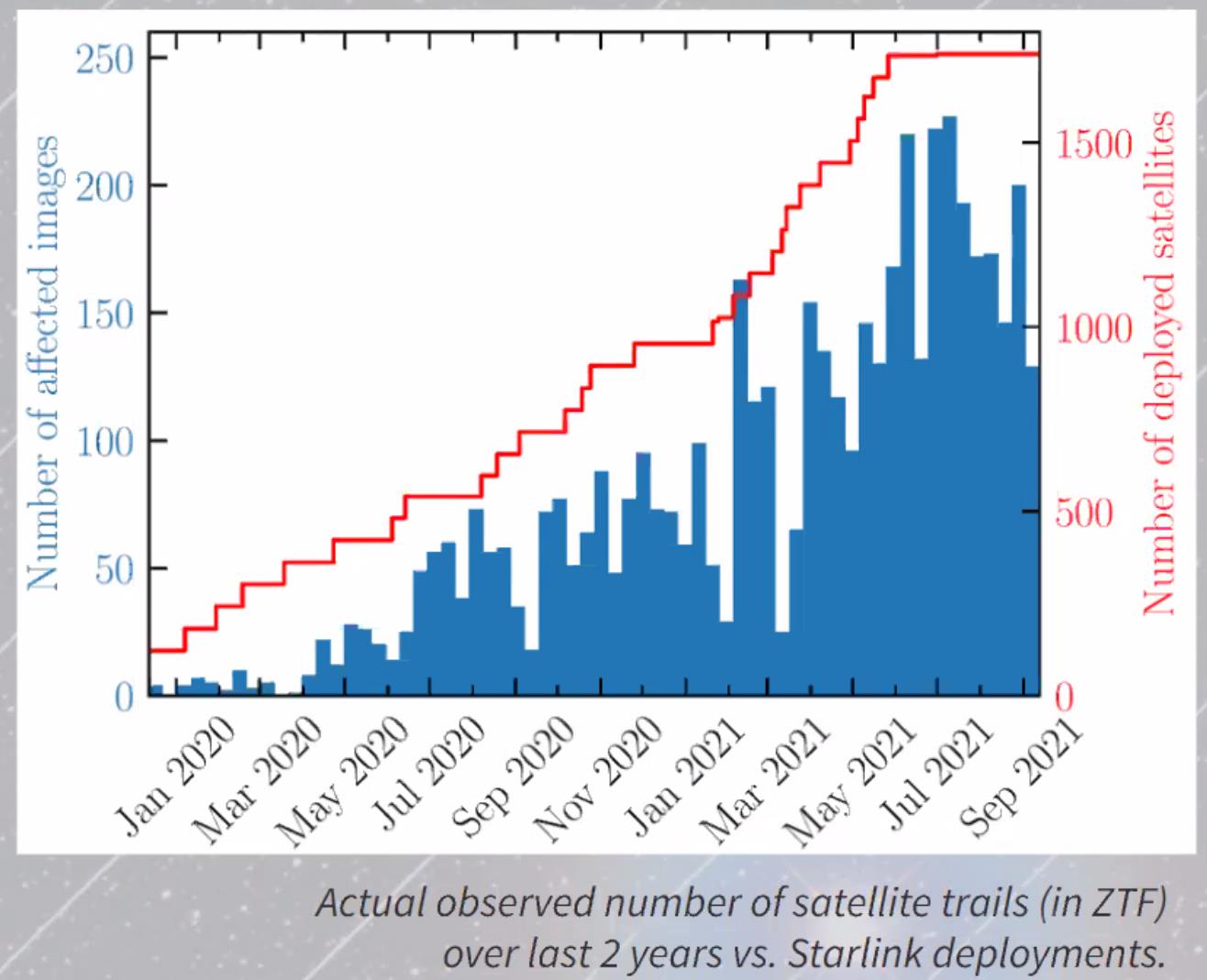
Meanwhile, over in the radio band, efforts to measure fine details and polarization in the cosmic microwave background will suffer, as will observations of molecular gas emissions, searches for organic molecules, studies of reionization, and studies of high-mass star forming regions.
At present, there are no national or international protections in place for optical astronomy, and only very limited protections for radio observations. Above and beyond the damage that individual, intact satellites will inflict on astronomy, there’s also an unprecedented potential for satellite debris.
Thus far, approximately 1% of the satellites launched since May of 2019 have failed, which means they’re in uncontrolled orbits. Once the number of satellites starts rising into the tens of thousands in low-Earth orbit, at about ~500-600 km in altitude, collisions start to become inevitable. While individual satellites are reflective, satellite debris is much moreso, as a fragmented satellite will have an exponentially larger surface area, as well as uncontrolled orientations. This will increase the overall brightness of the night sky, and will harm all astronomers — naked-eye, amateur, and professional alike — seeking to observe the Universe.
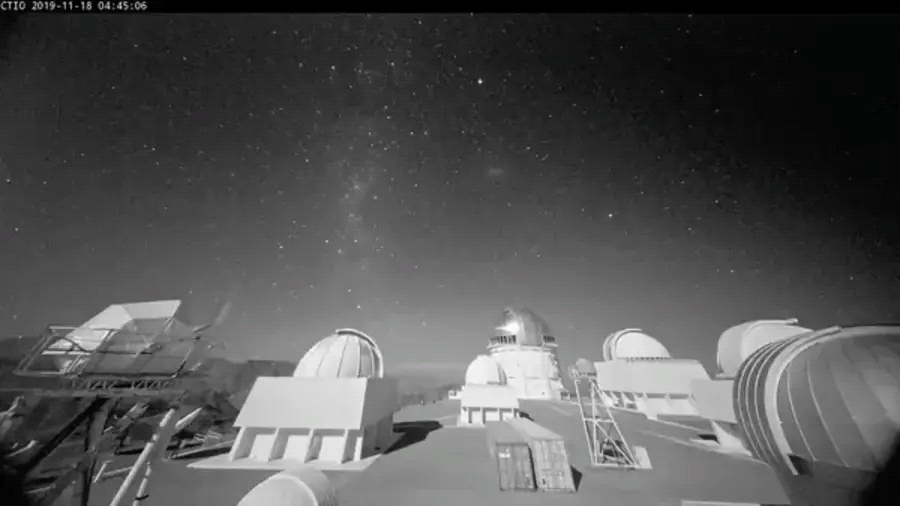
Credit: Tim Abott/CTIO
So why not just put everything in space, then? After all, we have a suite of space-based observatories, and they’ve been among the most valuable astronomical facilities of all-time.
The simple answer is: we can’t, not unless we invest a tremendous amount above-and-beyond what we’ve ever invested in astronomy, and not unless we’re also willing to accept second-rate science compared to what we’d get on the ground were satellite pollution not an issue. That’s right: doing astronomy from the ground enables us to do things that we cannot do from space: not as well, or in some cases, not at all. The five ways, in general, that staying on the ground is superior to going to space are:
- Size. In space, you’re limited by the dimensions and the payload capacity of the launch vehicle. On the ground, you can build as large and as heavy as you want.
- Reliability. Launch failures happen, and when they do, the mission is a total loss. NASA’s Orbiting Carbon Observatory, designed to measure how carbon dioxide moves through the atmosphere from space, crashed into the ocean 17 minutes after takeoff. There are no launch failures on the ground.
- Versatility. Want to catch that once-in-a-lifetime event? Jupiter occulting a quasar; an asteroid occulting a background star; the critical moment of a hybrid eclipse; the chance to measure a Kuiper belt object’s atmosphere? If you have a ground-based telescope in the right spot — and some ground-based observatories are mobile — you can see it no matter where it occurs. In space? You rely solely on luck.
- Maintenance. Put simply: there’s more infrastructure on the ground than you’ll ever have in space. If a component fails, wears out, degrades, etc., you have to send a servicing mission to space to fix it. On the ground? You can replace or repair anything, and can even have maintenance facilities on-site.
- Upgradeability. Want to upgrade your ground-based observatory? Just build a new instrument and swap the old one out. Want to upgrade your space-based observatory? It’s one of the most difficult and expensive tasks you can undertake.
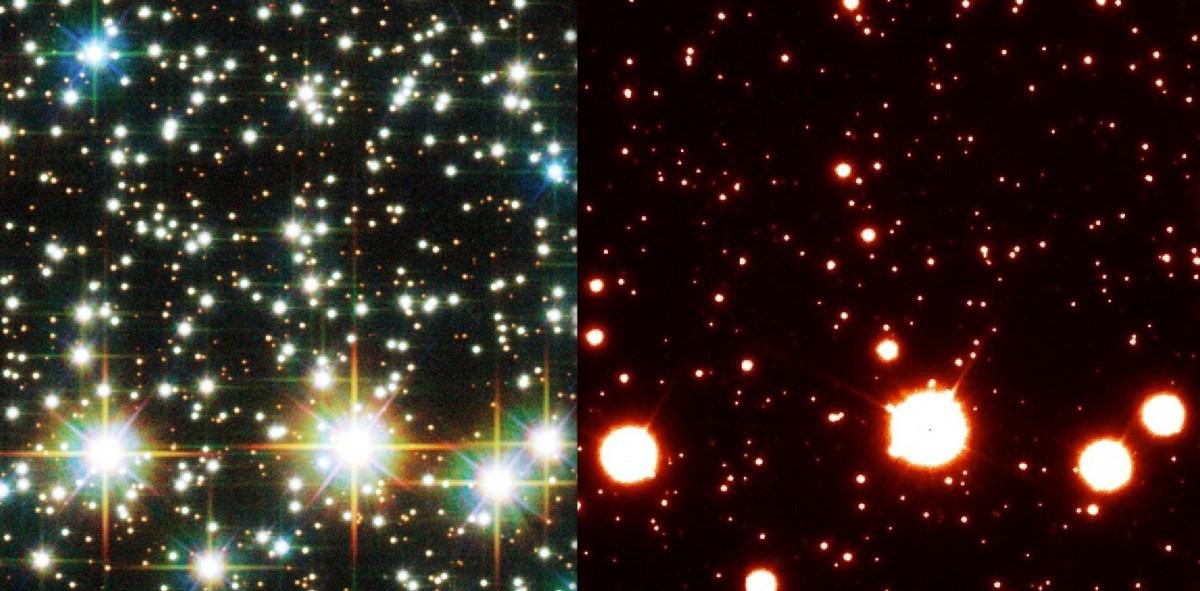
Credit: NASA/ESA/Hubble (L); Gemini Observatory/NSF/AURA/CONICYT/GeMS-GSAOI (R)
There are also some facts about the limitations of space-based observatories that are not generally appreciated. The instrument and camera technology launched aboard space telescopes is always obsolete, even before it’s launched. You have to:
- decide what you want your telescope to do,
- design the instruments that will enable it to do so,
- build those instruments,
- install them and integrate them onto the observatory,
- and then launch, commission, and calibrate the observatory it’s a part of.
If we were to design and build the instruments for the James Webb Space Telescope anew, today, it would benefit from 7-to-10 years of improved technology. Old telescopes on the ground, meanwhile, often find new life simply with the addition of a new camera or instrument. While ground-based telescopes can remain state-of-the-art for decades, space telescope technology is obsolete from the outset.
That, coupled with the limited size, weight, and maintenance capabilities of a space-based mission means that either we’ll have to throw about ~100 times the funding we do at astronomy to accomplish the same science goals from space that we do on the ground, or we’ll have to be content with inferior science.
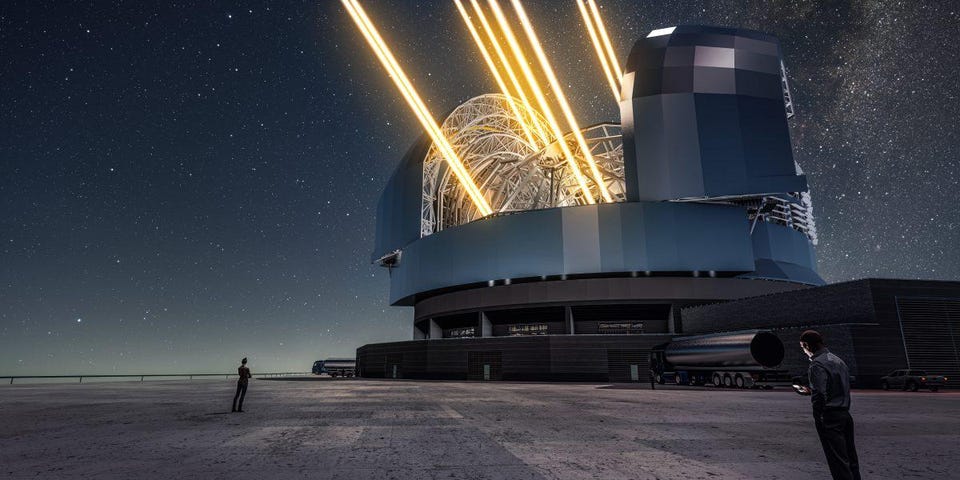
Credit: ESO/L. Calçada
On the flipside, there are some tremendous advantages in going to space, but we can rival at least one of them from the ground with the proper technological advances. What we can see is restricted by Earth’s atmosphere: we can only make observations when the sky conditions permit, over the wavelengths where the atmosphere is at least partially transparent to light, and even then, we’re only seeing that light after it’s been distorted by its journey through Earth’s atmosphere.
But that last part, at least, can be mitigated tremendously. First, we can build our observatories at very high altitudes, above a large fraction of Earth’s atmosphere, where the air is dry, still, and generally non-turbulent.
More importantly, however, we can construct adaptive optics systems. You can observe a known signal, like a bright star (or, if none is present, an artificial star created by a laser that reflects off of the atmosphere’s sodium layer), and see the shape it makes. Even though it doesn’t look like a point source, you intrinsically know what the star’s light profile ought to be. Then, in a brilliant step, you split the light into two paths, you read out one of the paths to inform you what “mirror shape” you would need to de-blur the image, and then you create that physical mirror and apply it to the properly-delayed path of the second path.
Using multiple guide stars, simultaneously, can improve this process even further; in a very real sense, adaptive optics can help you achieve ~99% of what you can achieve from space, but with much more light-gathering power and for a fraction of the cost.
If we want to save ground-based astronomy — and this really is an existential crisis for the field that requires swift, coordinated, large-scale action — there are a number of mitigations that must become mandatory. Although astronomers should work with willing industry partners to craft realistic regulatory goals, compliance cannot be voluntary; it must be mandatory. That likely needs to start with federal regulations in the United States, which very likely the United Nations will then adopt. Without that step, there will be no consequences for satellite providers that launch an arbitrary number of satellites that impact ground-based astronomy.
Beyond that, the individually bright satellites themselves will begin affecting observers worldwide, with approximately 1% of the total low-Earth orbit satellites visible at any moment in time from most locations. More astronomical images will be affected; ground-based science will take longer and will be of lower quality; certain fields of astronomy, including ones vital to the endeavor of protecting our planet, will suffer.
Additionally, the danger of orbital crowding, the risk (and severe consequences) of collisions, the creeping problem of aggregate light pollution, the inevitability of satellite failures and the corresponding increase in space debris, as well as the pollution that this will add to Earth’s atmosphere — such as adding ~30 times the amount of naturally occurring aluminum to our atmosphere — will have unintended environmental and geoengineering effects on our planet.
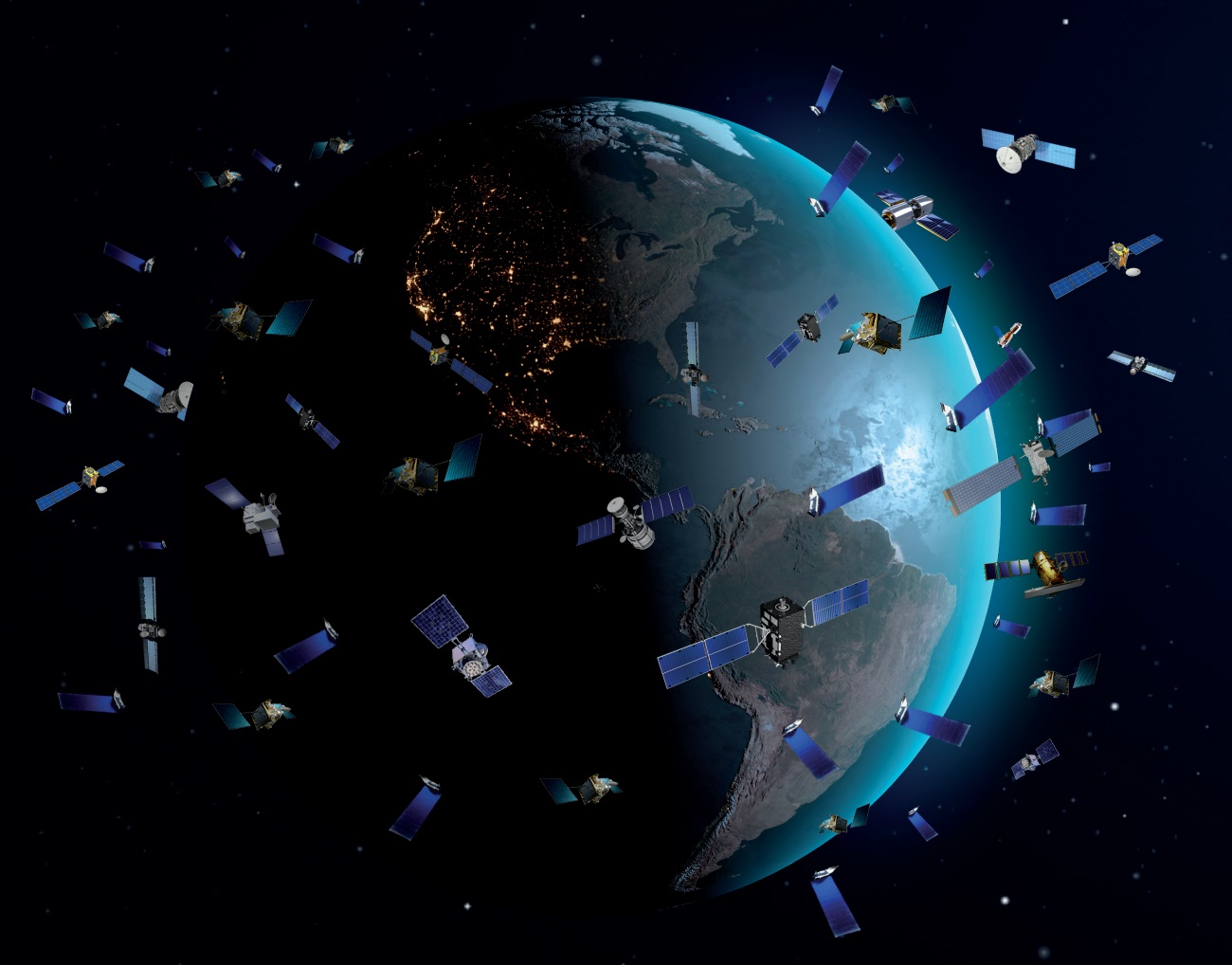
Although the stated goal of the International Astronomical Union’s initiatives is to have industry develop a voluntary corporate culture of cooperation, the only realistic solution is to impose effective and enforceable regulations. Put bluntly: the night sky belongs to all of humanity, is part of the environment, and is already being plundered for the benefit of a few at the expense of the general population.
There is a responsible way to provide high-speed satellite internet to the world, but the least impactful avenue would seek to use the fewest overall numbers of satellites in service of the greatest number of people. With multiple overlapping competitors, and with the status quo being that outer space is open to everyone, compliance with the current set of recommendations is completely voluntary: a recipe for the complete marginalization of ground-based astronomers’ concerns. As the attendees of SATCON2 emphasized in their executive summary last year:
“Tens of thousands of satellites in [low-Earth orbit] will inevitably create negative impacts for ground-based astronomy, for ground-based amateur, environmental, and cultural stakeholders, and possibly for space-based interests in comparable orbits, all of which will play out in an arena poorly equipped with policy to manage them. The canvas for unintended consequences and conflict is solidly in place. […] We are on the threshold of fundamentally changing a natural resource that since our earliest ancestors has been a source of wonder, storytelling, discovery, and understanding of ourselves and our origins. We transform that at our peril.”
Send in your Ask Ethan questions to startswithabang at gmail dot com!
